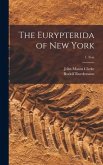The Biblical Antiquity of Man, by Samuel Lucas, explores the intersection of biblical accounts and early scientific understanding regarding the age of humanity and the earth. Lucas delves into the scriptural narratives, primarily from the Old Testament, to examine the timelines and genealogies presented therein. He contrasts these biblical chronologies with emerging scientific theories and paleontological findings of his time, grappling with the challenges and potential reconciliations between religious faith and scientific inquiry. This work offers valuable insights into the historical debates surrounding creation, the flood narrative, and the origins of civilization, providing a glimpse into the intellectual landscape of the 19th century, when traditional religious beliefs were increasingly confronted by scientific discoveries. Lucas's analysis serves as a historical document, reflecting the ongoing dialogue between theology and science and the persistent human quest to understand our place in the cosmos. This work has been selected by scholars as being culturally important, and is part of the knowledge base of civilization as we know it. This work was reproduced from the original artifact, and remains as true to the original work as possible. Therefore, you will see the original copyright references, library stamps (as most of these works have been housed in our most important libraries around the world), and other notations in the work. This work is in the public domain in the United States of America, and possibly other nations. Within the United States, you may freely copy and distribute this work, as no entity (individual or corporate) has a copyright on the body of the work. As a reproduction of a historical artifact, this work may contain missing or blurred pages, poor pictures, errant marks, etc. Scholars believe, and we concur, that this work is important enough to be preserved, reproduced, and made generally available to the public. We appreciate your support of the preservation process, and thank you for being an important part of keeping this knowledge alive and relevant.
Bitte wählen Sie Ihr Anliegen aus.
Rechnungen
Retourenschein anfordern
Bestellstatus
Storno








